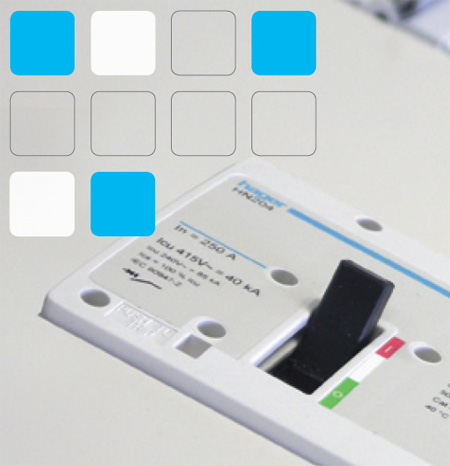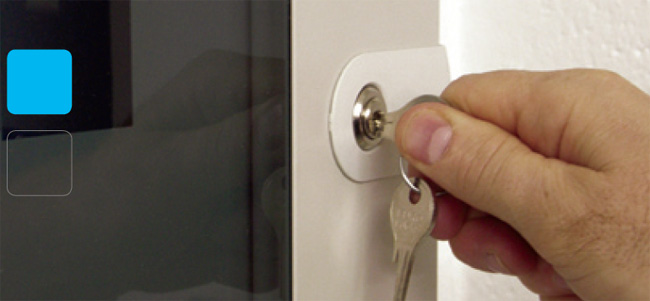Protection against fault current - the Hager Commercial Distribution Boards
 The value of prospective fault current will need to be assessed when selecting a distribution board and devices. For an installation with several distribution boards there will be different values, so you will need to assess this at different points. Section 434 of BS 7671 details the requirements of fault current protection. Only faults belonging to the same circuit need to be considered. On a three-phase distribution board, where there is a mixture of three-phase and single-phase circuits we need to look at these individually.
The value of prospective fault current will need to be assessed when selecting a distribution board and devices. For an installation with several distribution boards there will be different values, so you will need to assess this at different points. Section 434 of BS 7671 details the requirements of fault current protection. Only faults belonging to the same circuit need to be considered. On a three-phase distribution board, where there is a mixture of three-phase and single-phase circuits we need to look at these individually.A single-phase (line to neutral) fault will be approximately half that of the three-phase fault (across all lines). This affects the fault current ratings of individual devices for the distribution board. For example, if a distribution board has a three-phase 10kA prospective fault current, then the single-phase devices need to be selected to have a minimum fault current rating of 5kA, assuming that the line to neutral prospective fault current is equal to or higher than the prospective earth fault current.
434.5.1 states that the short circuit capacity of devices in the distribution board shall not be less than the prospective fault current where the device is installed. A lower breaking capacity is permitted if another device on the supply side has the necessary breaking capacity. In this case the supply side device provides back up protection for the load side device. Manufacturer’s data should be sought to obtain the level of back up protection provided. Using back up protection can produce a more cost effective installation with perhaps the incomer to a TP&N board being a 250A MCCB. 10kA outgoing devices could then be installed where there is a 20kA fault level at that distribution board, subject to manufacturer’s data.
Use by skilled or instructed persons?
 Where there are larger fault currents you should also consider the type of person who will operate the devices. If you can restrict access to the board to ‘skilled’ or ‘instructed’ persons only, perhaps by having the board in a locked riser or ensuring that the door to the board is locked, then BS EN 60947-2 can apply if the device has 947-2 ratings assigned by the manufacturer. In such a case the 10kA BS EN 60898 devices may be rated to 15kA; again manufacturer’s information must be obtained.
Where there are larger fault currents you should also consider the type of person who will operate the devices. If you can restrict access to the board to ‘skilled’ or ‘instructed’ persons only, perhaps by having the board in a locked riser or ensuring that the door to the board is locked, then BS EN 60947-2 can apply if the device has 947-2 ratings assigned by the manufacturer. In such a case the 10kA BS EN 60898 devices may be rated to 15kA; again manufacturer’s information must be obtained.
Distribution board fault current rating
The manufacturer is responsible for ensuring the capability of the equipment between the incoming and the outgoing terminals of the distribution board, which includes busbars and connections as well as incoming and outgoing devices. The manufacturer will have determined the distribution board fault current rating(s), in accordance with the product standard.[This is the third part of the Hager Full Guide to the Commercial Installations - read the previous articles about the Type B Distribution Boards and compliance with standards, and the cable entry + the isolation and switching(download the full pdf file of the guide via the Hager website) - we will continue to post the next parts of the guide, keep an eye on Blog SparksDirect].



